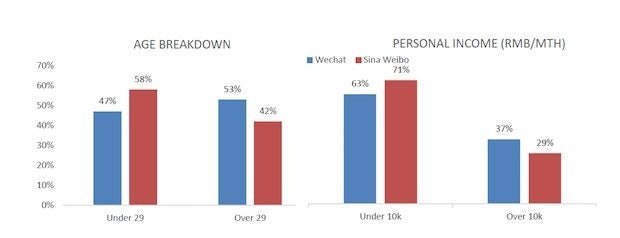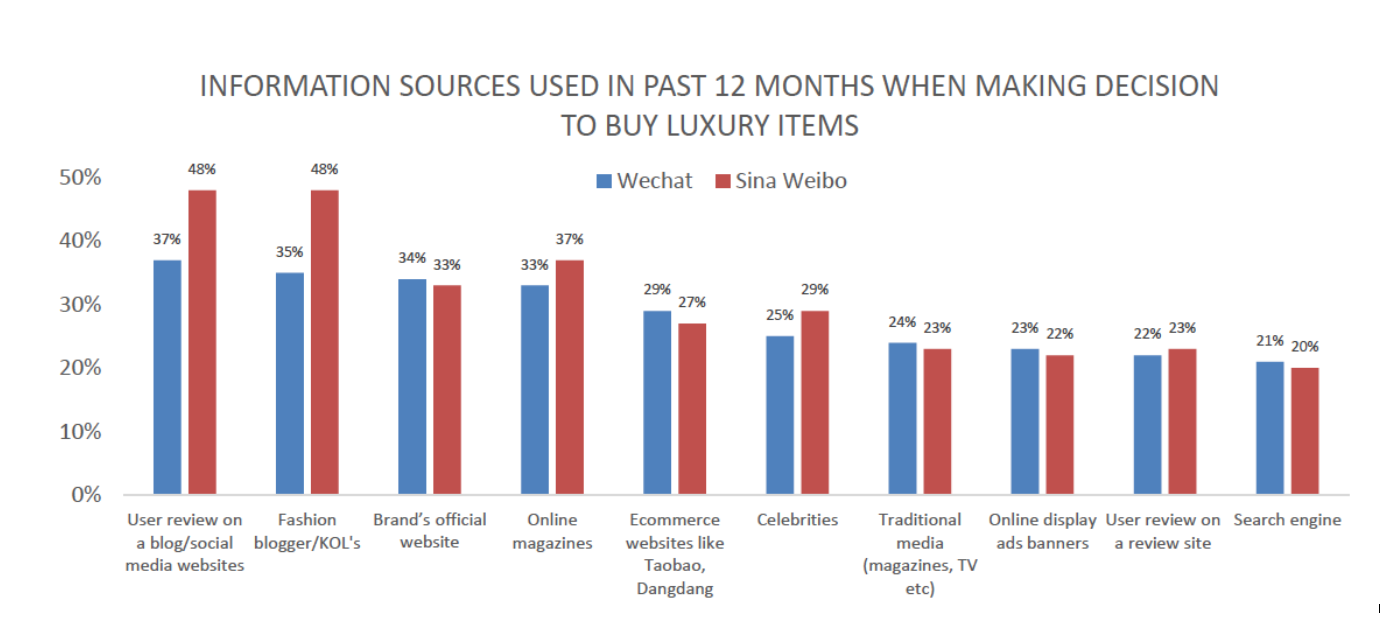
China marketing experts’ obsession with WeChat may be overshadowing microblogging giant Weibo, but new research shows social influence in China is definitely still a “WeChat + Weibo” thing.
Ever since the meteoric rise of WeChat in China, brands have begun to put a greater emphasis on Tencent’s mobile messaging app, setting up subscription accounts and blasting long-form content to their fans, sometimes three to four times a week. Many smart brands have developed customer engagement environments on WeChat service accounts, forgoing the need to push constant social content (service accounts restrict postings to four times a month) but taking advantage of many utility features. We always recommend our clients to dump their WeChat subscription accounts in favor of service ones because there’s so much richer consumer data, enabling them to create true digital social CRM/e-commerce ecosystems.
Foreign and Chinese companies alike have recently begun to ask me if they should dump their Weibo accounts and put all their eggs in the WeChat basket. Although annual Weibo usage has dropped to 30 percent in 2015, down from 54 percent in 2012, and while WeChat has grown to 697 million monthly active users, we continue to recommend that clients continue their Weibo accounts because it helps in the purchase consideration phase, particularly important for luxury brands.
A recent Weibo vs. WeChat marketing study conducted by luxury specialist research agency WIMI, amongst 10,000 China netizens, revealed some interesting insights into how people make decisions using these two platforms when buying luxury and premium brands online.
According to WIMI’s findings, consumers overwhelmingly choose WeChat over Weibo in terms of time spent, but in terms of types of information when buying luxury items online—such as comparing prices, reading reviews, or understanding brand information—the two are virtually the same and there are no noticeable differences.

From a demographic perspective, Weibo users tend to be younger and have lower personal incomes. These Weibo fans tend to be more socially engaged, reading user reviews and following celebrity or KOL posts, while WeChat fans tend to follow their friends’ recommendations.

According to the study, hardcore Weibo fans are 50 percent more likely to be influenced by KOLs than their friends when it comes to luxury purchases, which probably points to the fact that Weibo, with its Twitter-like information feed, is simply far easier to search for product information than WeChat.
Netizens who use Weibo to buy loyalty goods are much more loyal to the platform than WeChat. According to WIMI, netizens who use Weibo to help make purchase decisions are 70 percent more likely to go back to the platform to validate future purchases, while WeChat users go back only 40 percent of the time.
But the truth of it is that the two platforms work together in a symbiotic nature, both taking a role in helping consumers make purchase decisions. Weibo is used to research purchases amongst KOLs, celebrities, and brand sites, while WeChat becomes the necessary tool to validate purchase amongst your friends.
Brands that use both platforms for their intended purposes will win in the end. For all its powerful utility features, WeChat is still fundamentally a messenger application, while Weibo is still far more social. Or put it another way: top-funnel influence driving awareness and consideration is better handled on Weibo, while customer engagement and loyalty—more bottom-funnel influence—is best handled on WeChat.
In order to be effective, brands’ social marketing strategies in China still require a combination of Weibo and WeChat.
Bryce Whitwam is the CEO at Wunderman China. He can be contacted at bryce.whitwam@wunderman.com.